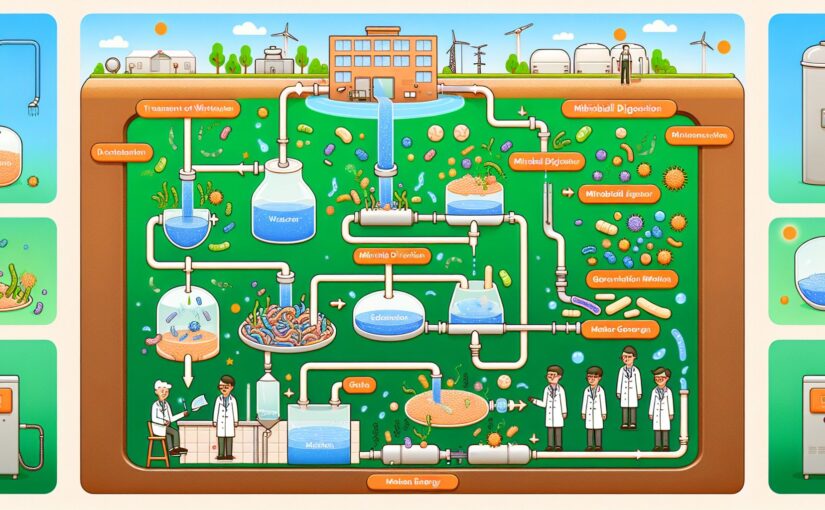As the population increases and urbanization accelerates, wastewater production is invariably on the rise. The consideration of wastewater as a renewable energy source has recently gained traction among environmental engineers and scientists. Innovative technological advances in wastewater treatment have seen the emergence of new processes that not only treat wastewater but also harvest renewable energy. This article offers an insightful exploration into the process of generating renewable energy from wastewater.
Understanding WasteWater
Wastewater implies any water that has been negatively affected by human influence. It contains numerous waste products like biological organisms, solid waste, organic material, and chemicals. Traditional treatment methods have largely focused on removing these materials and discharging the clean water back to the environment. However, the renewable energy sector has made leaps and bounds in the use of wastewater. The organic material and biological organisms usually considered as waste have become an energy goldmine through processes like anaerobic digestion and microbial fuel cells.
The Process
Fetching renewable energy from wastewater involves the transformation of the chemical energy present in its organic matter. This is carried out using aerobic or anaerobic digestion. Anaerobic digestion has shown great potential because it culminates in biogas, a mixture of methane and carbon dioxide, which can be easily harvested as energy.
On the other hand, aerobic digestion is commonly employed in small-scale wastewater treatments and seldom results in significant energy recovery. However, the energy-rich sludge byproduct of this process has potential second-hand uses as a soil conditioner or fertiliser.
Microbial Fuel Cells
In addition, microbial fuel cells (MFCs) have emerged as a promising technology in the treatment of wastewater. MFCs fundamentally comprise of bacteria acting as catalysts to breakdown organic matter, producing electrons that are then captured to generate electricity. Unlike conventional wastewater treatment processes, MFCs do not require energy-demanding mechanical aeration. Consequently, they significantly reduce energy costs and CO2 emissions during the treatment of wastewater.
The Future of Wastewater
Initiatives to create renewable energy from wastewater are gradually changing the face of wastewater management and energy production. These initiatives could herald a new age of sustainable sanitation that combines cost-effective wastewater treatment with energy recovery.
While wastewater-to-energy projects face several challenges like high capital costs and lack of awareness, addressing these hurdles will inevitably catalyze the transition to a more sustainable and energy-efficient society.
Sources:
1. Jadhav, D. A. and Ghangrekar, M. M. [2020]. Microbial Fuel Cell: An Innovative Wastewater Treatment and Renewable Energy Production System. Industrial Wastewater Treatment, Recycling and Reuse. Link
2. Logan, B.[2008]. Microbial Fuel Cells. John Wiley & Sons. Link
3. Do, M. H., Lim, H., Nguyen, T. Y., Nghiem, L. D., & Hai, F. I. [2020]. Energy recovery from wastewater: A practical approach towards energy-neutral wastewater treatment. Reviews in Environmental Science and Bio/Technology. Link
